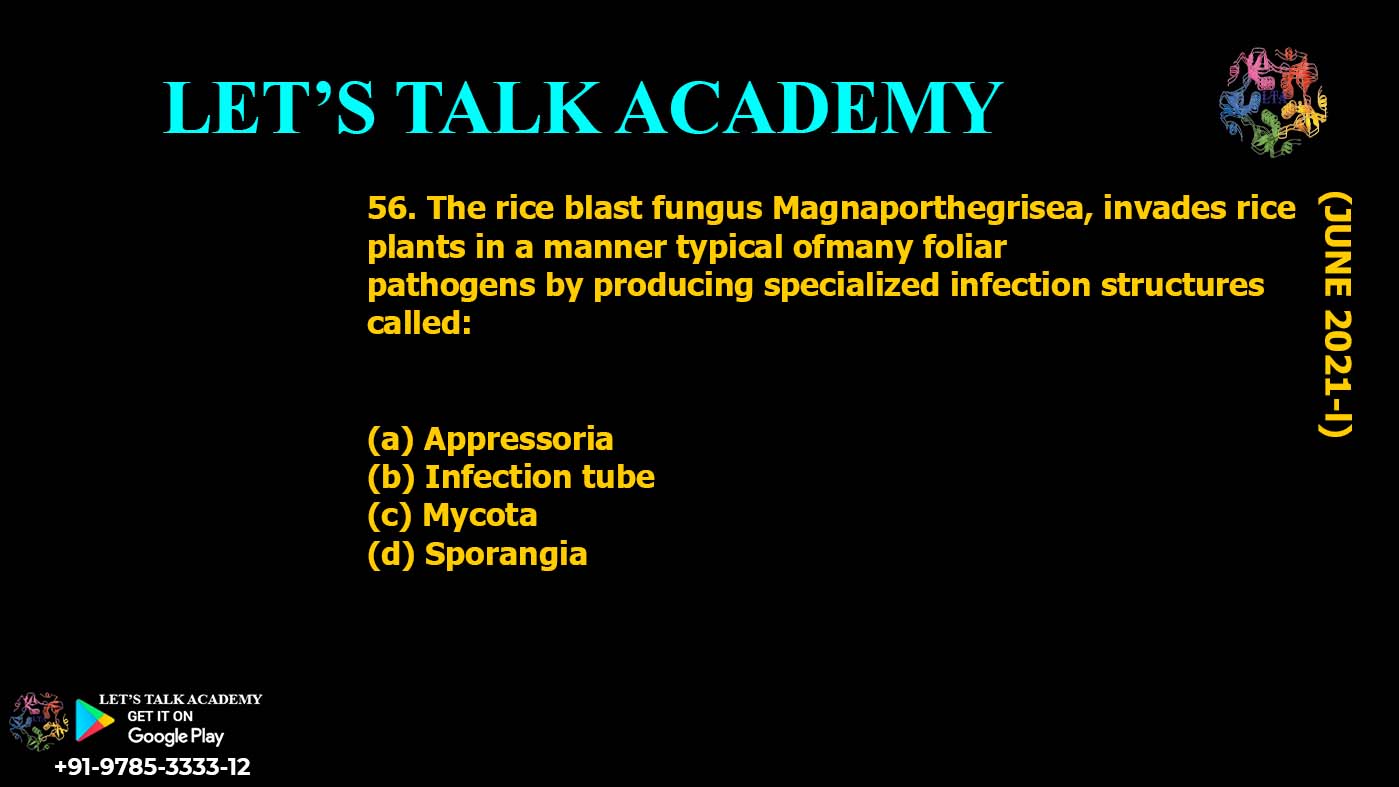56. The rice blast fungus Magnaporthegrisea, invades rice plants in a manner typical ofmany foliar
pathogens by producing specialized infection structures called:
(a) Appressoria
(b) Infection tube
(c) Mycota
(d) Sporangia
Introduction
The rice blast fungus (Magnaporthe grisea) is one of the most damaging pathogens affecting rice crops globally. This fungal disease causes significant yield losses and is a major concern for rice farmers. The infection process of Magnaporthe grisea is a complex sequence involving specialized structures that facilitate its invasion of rice plants. One of the key structures responsible for this infection is called appressoria.
Infection Structures of Magnaporthe grisea
To effectively invade and infect rice plants, Magnaporthe grisea produces specialized infection structures that are crucial for penetrating the plant’s protective layers. Let’s explore these structures:
-
Appressoria:
-
Appressoria are specialized, highly differentiated infection structures that the fungus forms to penetrate the plant’s cell walls. These structures are crucial for the fungus to overcome the physical barriers of the plant, such as the cuticle and epidermis. The appressoria generate turgor pressure, allowing the fungus to physically force its way into the plant tissue. They are considered the key infection structure in the infection process of Magnaporthe grisea and many other foliar pathogens.
-
-
Infection Tube:
-
After the appressoria penetrate the plant tissue, the fungus forms an infection tube that facilitates the transfer of fungal material into the plant cells. However, the infection tube itself is a secondary structure that aids in the spread of the infection rather than the initial penetration.
-
-
Mycota:
-
Mycota refers to the fungal community or group as a whole, and it is not a specific infection structure associated with fungal pathogenesis. This term is too general to describe the mechanism by which Magnaporthe grisea infects rice plants.
-
-
Sporangia:
-
Sporangia are reproductive structures of certain fungi that contain spores. While sporangia are involved in the life cycle of some fungi, they are not the primary structures responsible for the initial infection process in the case of Magnaporthe grisea.
-
Conclusion
The rice blast fungus Magnaporthe grisea uses appressoria as the specialized infection structure to invade rice plants. These structures are critical for penetrating the plant’s surface and initiating the infection process.
Thus, the correct answer is:
-
(a) Appressoria.
Understanding the role of appressoria in the infection process can help in the development of strategies to control rice blast disease and protect crops from this devastating fungal pathogen.
Correct Answer: (a) Appressoria




2 Comments
Akshay mahawar
April 22, 2025Done 👍
yogesh sharma
May 7, 2025प्रश्न पूर्ण हुआ गुरुदेव 🙏